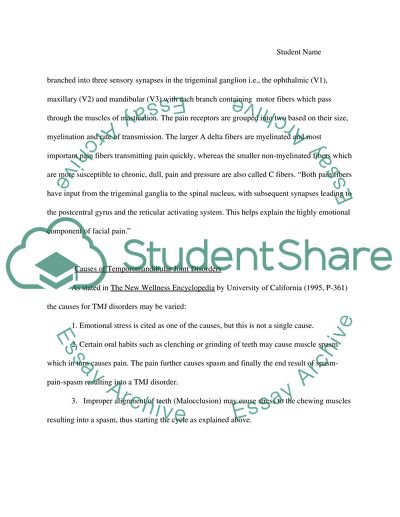Temporomandibular Joint Disorder Essay Example | Topics and Well Written Essays - 1000 words. Retrieved from https://studentshare.org/health-sciences-medicine/1504901-temporomandibular-joint-disorder
Temporomandibular Joint Disorder Essay Example | Topics and Well Written Essays - 1000 Words. https://studentshare.org/health-sciences-medicine/1504901-temporomandibular-joint-disorder.


